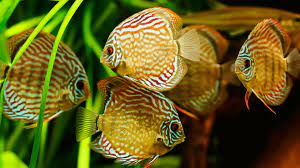How to Make Your Aquarium Plant Fertilizer Work for You
If you are starting a new aquarium and have not yet added any aquarium plants, you should consider using an aquarium plant fertilizer. There are several types of aquarium plants available in pet stores and online. Many aquarium plants require fertilization, especially since they are not directly receiving oxygen during their growing period. Fertilizer is crucial for new aquarium plants, as it helps the plant to absorb the nutrients it needs to grow. This can be very important if your aquarium plants are relatively new and you cannot get the right nutrition from the water.
Most low-tech aquarium plants don't need fertilizers at all. However, some low-growing plants, such as Java Fern, tend to use up nutrients quickly. As mentioned earlier, most of these nutrients come from fish food, water changes, and general waste from your aquarium. But if you begin pumping in carbon dioxide or end up upping your aquarium lighting, you'll likely have to keep up with the nutrient demands of your new plants and begin dosing accordingly.
It is best to purchase a pre-compost heap. This will make it easier on you in the long run because it already has the organic waste cut up into smaller pieces. This also makes it easier for you to add the fertilizer. You can also purchase pre-compost heap in bulk to save even more money. The amount of organic waste composted is based on how much of your tank is covered.https://dissectingminds.blogspot.com/2021/08/aquarium-plant-fertilizer-for-healthy.html
If you already have dry fertilizers, you should consider changing your soil as soon as possible, or at least for the long time you plan to keep your tank. Plants get most of their nutrients from the soil, so changing the soil will help to dilute the nutrients in your dry fertilizers over time. Some consider adding a thin layer of top soil to the bottom of the tank after the aquarium has been established for a few weeks to help with getting the nutrients to the right areas more quickly. Read more on aquarium plant fertilizer
For starter aquariums, there are ready-to-use starter plant foods available. These products include bulk dried pellets and tablets. Both products contain pre-measured amounts of all nutrients that you might need for your aquarium. For a longer-term stay in your tank, consider purchasing bulk liquid plant food. This product is available in both powder and pill forms and comes in a variety of forms that allow you to be sure you get everything your tank needs.
In the beginning of your aquarium's life, you should give it a full water change to remove any old or decaying matter in the tank. Make sure to check your water column at least twice a week to make sure there are no large items sticking up on the bottom that have been there since the water changed. Remove any excess nutrients that might have sunk to the bottom by flushing them down to the water surface with a jet or brush. Then do a water change once again to rid your water of any excess nutrients.
After the water changes and the tank has been cleared out, what is left to do is mix a quality bacterial additive into the mixture. You can find these additives in either tablet or micro-and powder form. Many hobbyists also purchase a powdered nitrogen supply to use in conjunction with this first step. Do not use tap water for this purpose as the tap water contains too much chlorine to properly support bacteria growth. In many cases, aquarium plants that are very efficient grow best in a nitrate-rich environment. Nitrogen-rich sources include fish that feed on nitrates such as neonates and brackish goldfish, as well as commercial livestock such as cows and alfalfa.
The final step in mixing your own tap water and aquatic plant food is to use a medium that you enjoy. There are a number of different fertilization mediums that you can choose from. They typically all work quite well together and provide the finished product of a beautiful planted aquarium. Mixing different fertilizers will allow you to experiment with different types of combinations to find the combination that is best for your particular tank.



Comments
Post a Comment